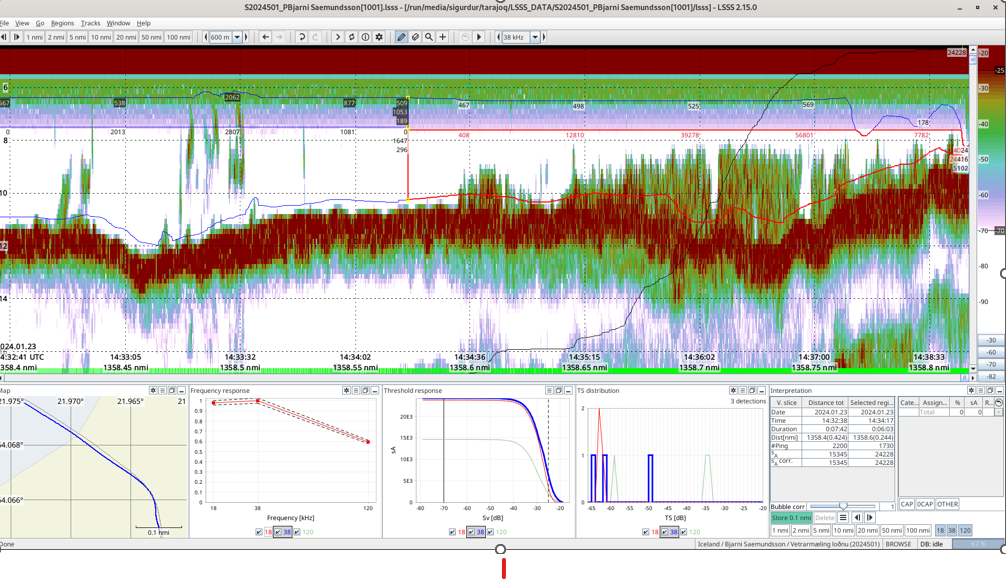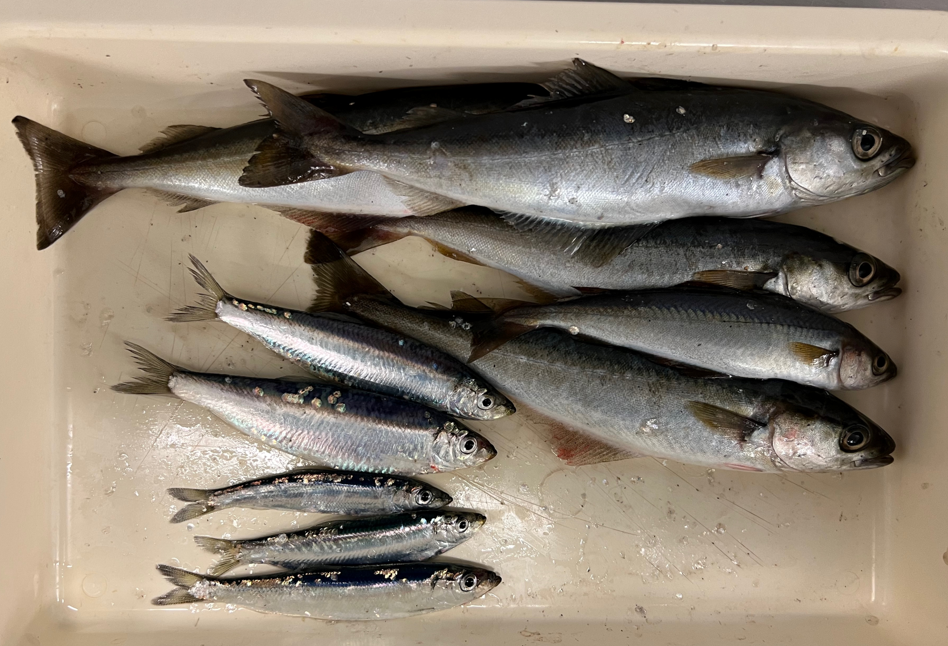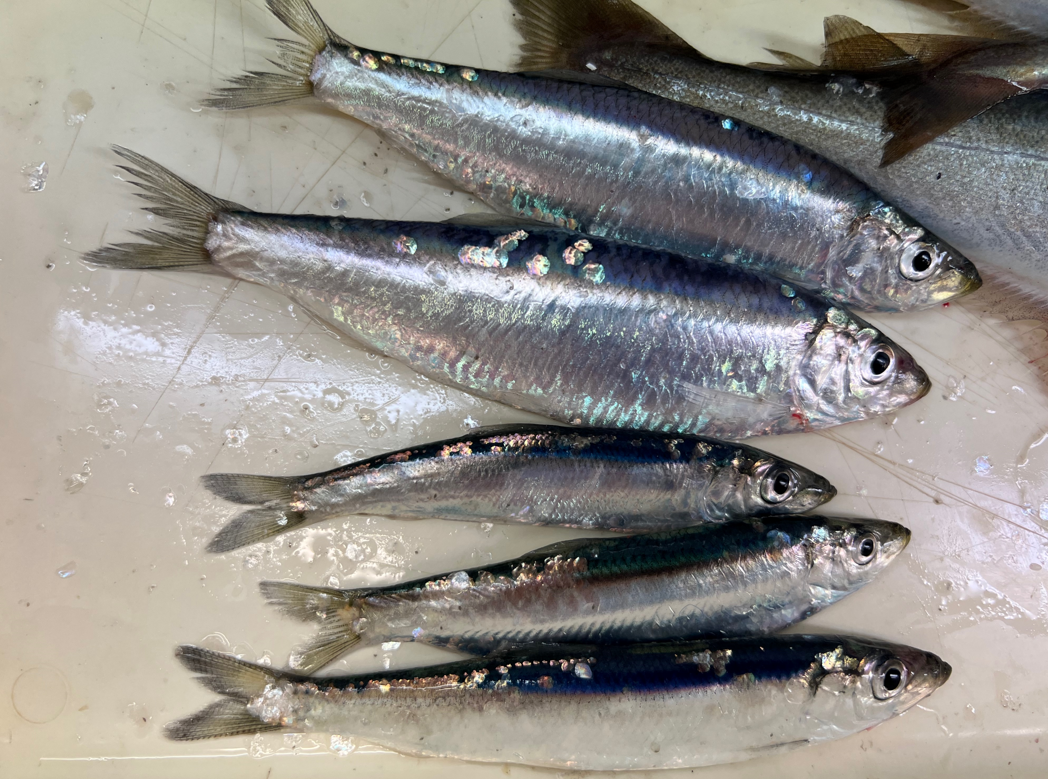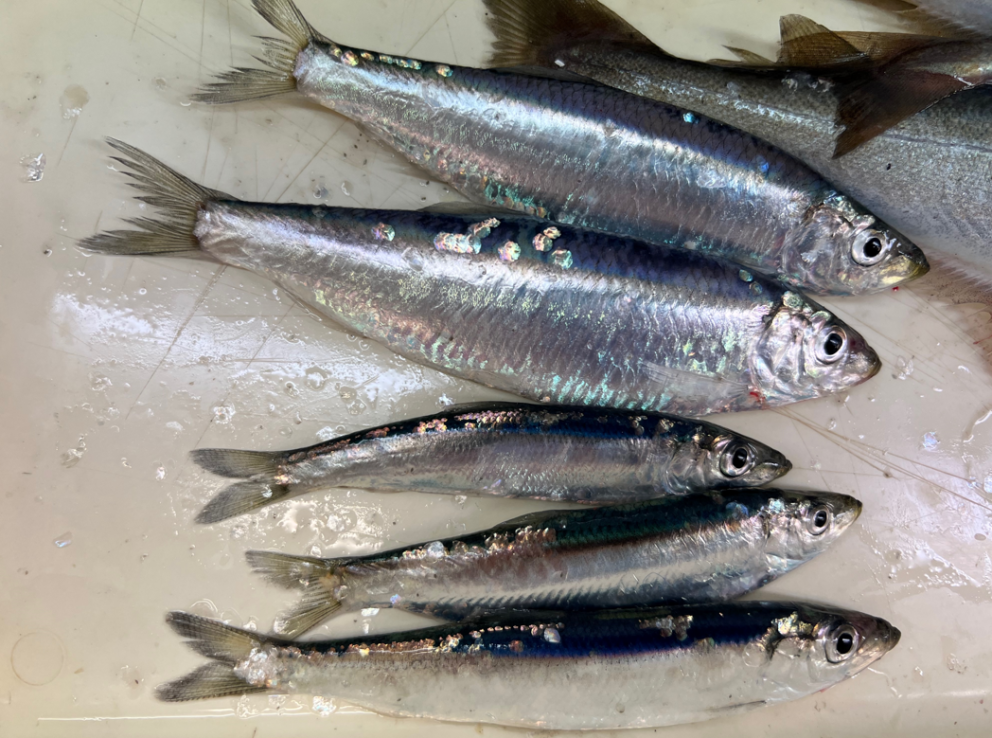- Research
- Fish tagging
- Lumpfish research
- Oceanography
- Seabed mapping
- Arnarfjörður
- Drekasvæði
- Ísafjarðardjúp
- Jökulbanki
- Jökuldjúp
- Kolbeinseyjarhryggur and adjacent area
- Kolluáll
- Langanesgrunn
- Látragrunn
- Nesdjúp
- Reykjaneshryggur and adjacent area
- Selvogsbanki
- South of Selvogsbanki
- South of Skeiðarárdjúp
- South of Skerjadjúp
- Southeast of Lónsdjúp
- Southwest of Jökuldjúp
- Suðausturmið
- Suðurdjúp
- Vesturdjúp
- East of Reykjaneshryggur
- Vestfjardarmid
- Seal research
- Whale Research
- Advice
- About
Humpback in Hafnarfjordur on hunt for herring and sprat
07. February 2024
Humpback in Hafnarfjordur on hunt for herring and sprat
Humpback whales in Hafnarfjordur harbour have delighted both the staff of Marine and Freshwater Research Institute (MFRI) and people passing by at the harbour, as the view has often been on a par with the best whale watching. But watching the whales has not been enough for the MFRI staff, who have pondered the question of why the whales would stay in these areas. And now the answer is clear as derived from research applying acoustic methods and biological sampling. The short answer is that humpbacks have been chasing schools of small herring and sprat but also saith.
After MFRI moved to Hafnarfjordur in 2020 along with the operation of research vessels, fish schools have been noticed in the harbour at the start and/or end of some research surveys. It can therefore be assumed that if the whale in Hafnarfjordur harbour is chasing the fish, the whale's movements in and out of the inner harbour are connected to movements of prey. Furthermore, one could also wonder what is attracting small fish to the harbour and whether there is a need for an ecological study in the vicinity of MFRI?
The MFRI research vessels have carried out from time-to-time acoustical recordings on the biotic in the water column under the vessels on their way in and out of the harbour. A thorough research in the harbour is impossible with these large vessels beside being beyond the scope of the research surveys. However, certain observations have been made, nonetheless.
Because of the whales staying in Hafnarfjordur harbour in mid-January, and obviously feeding, it was decided to shed light on its possible food there. The humpback was in the harbour and said goodbye to the crew of the research vessel on Bjarni Saemundsson when they set off on a capelin survey on January 16. After the survey approximately a week later, the whale greeted the research personnel when entering the harbour again at the corner of Suðurbakki (Figure 2).

Figure 2. The humpback whale greets the crew of Bjarni Saemundsson in Hafnarfjordur harbour upon their return.
Acoustic measurements
During acoustic measurements, the focus is normally to collect acoustic registrations at much greater depth than in the harbour and therefore the frequency of transmissions from the echosounders is generally less than would be desirable for shallow areas. Hence, at the end of the Bjarni’s survey, acoustic registrations were collected shallower, and frequency of transmissions was kept higher than usual.
Figure 3 below shows a 750 m long section of acoustic measurement from the inlet of Hafnarfjordur and around the corner of Sudurbakki on the way into the pier Oseyrarbryggja. To the north of Sudurbakki in a slightly deeper water, small fish schools were seen in the water column, while inner when approaching the pier there was an almost continuous 2-3 m thick blanket of fish near the bottom.

Figure 3. Acoustic registrations from RV Bjarni Saemundsson in Hafnarfjordur harbour in the afternoon on 23 January shows the sea bottom (thick dark red layer) and fish schools (red to green depending on its density). This so-called echogram with various other information, is shown from the interpretation software LSSS, which MFRI has been using since around 2011.
Fish sampling
Considering the results of the acoustic measurements, it was decided to take samples from the fish that were seen on the echograms in the harbour. On 30 January, the crew on Bjarni Saemundsson laid a trout net in the harbour with three different mesh sizes that were tied together. The nets were placed near MFRI´s headquarter and the vessel for an hour. Figure 5 shows the fish that were caught in the nets, and Figure 6 shows herring and sprat in a close-up. Ten fish were caught, five saith ranging from 18–26 cm in length, three sprats 12–15 cm and two small herring 12–14 cm in length. The saith were caught in the net with the largest meshes, but the herring and sprat were poorly tangled in the net, and quite a few of them were lost when the net was pulled in. Hence, the catch sample represents the fish species there but not their quantity.

Figure 4. The catch from the nets in Hafnarfjordur harbour on 30 January

Figure 5. Close-up photo of herring (the two smallest) and sprat

